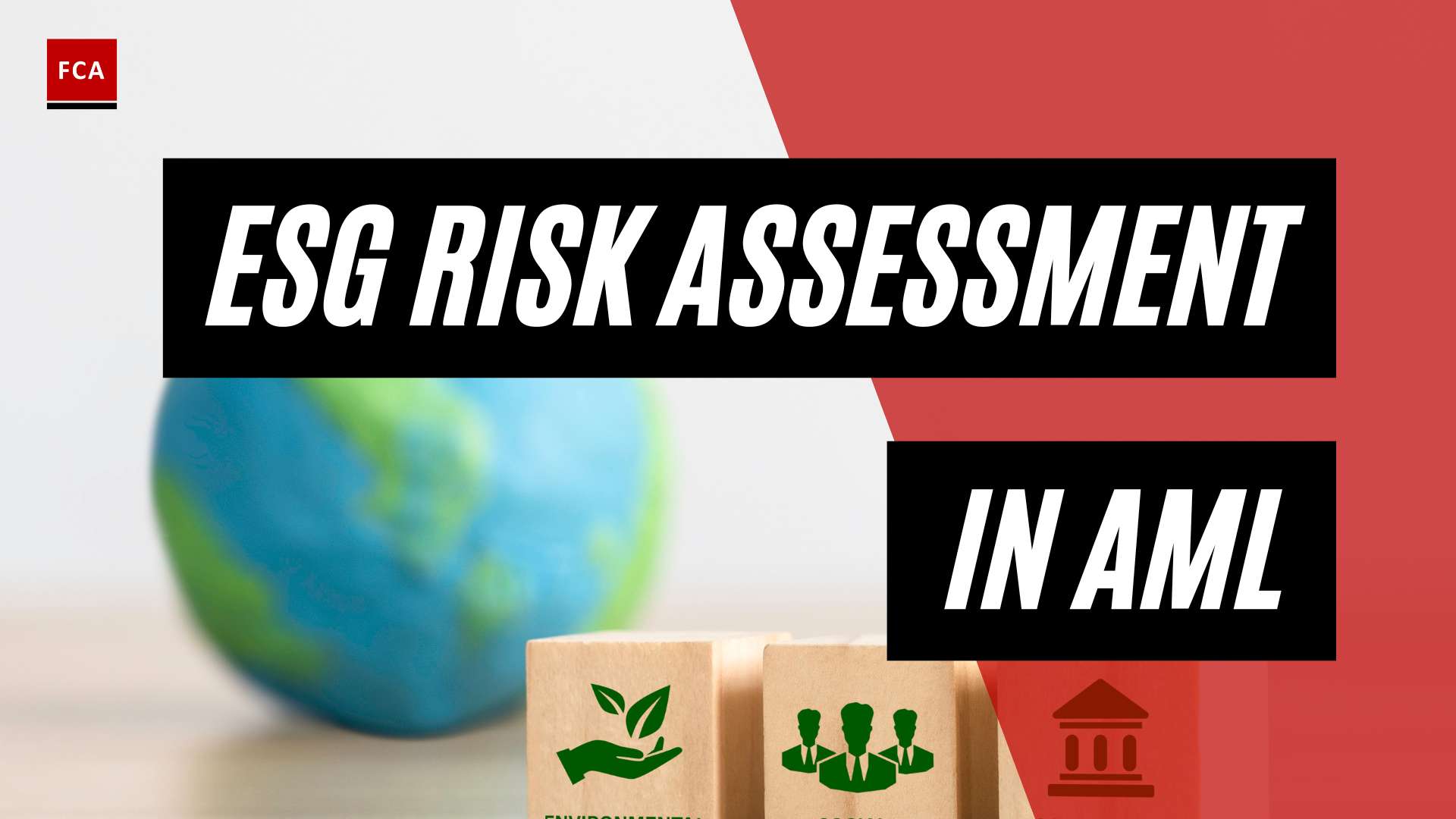AML Audit: An Overview
When it comes to ensuring compliance with anti-money laundering (AML) regulations, conducting AML audits is a critical component of an effective risk management framework. AML audits aim to assess the effectiveness of a firm’s AML compliance program, ensuring it meets legal requirements and industry standards. By evaluating the design and implementation of the AML program, these audits help identify any gaps and recommend corrective actions to ensure compliance (Alessa).
Importance of AML Audits
The importance of AML audits cannot be understated. A comprehensive AML audit includes an evaluation of the AML program’s design and implementation, examining policies, procedures, internal controls, and risk management practices for compliance effectiveness. By conducting regular audits, organizations can identify weaknesses or gaps in their AML controls and processes, enabling them to take corrective actions and mitigate potential risks. AML audits serve several crucial purposes, including:
- Demonstrating Compliance: AML audits provide evidence of an organization’s commitment to complying with AML regulations and industry best practices. This is particularly important in industries that are highly regulated, such as financial services and legal sectors.
- Identifying Vulnerabilities: AML audits help identify vulnerabilities and weaknesses in an organization’s AML program. By conducting thorough assessments, auditors can pinpoint areas where controls may be inadequate or ineffective, allowing for timely remediation.
- Mitigating Risks: AML audits play a vital role in mitigating the risk of money laundering and terrorist financing. By identifying gaps in the AML program, organizations can enhance their controls and processes to prevent illicit activities and protect themselves from reputational and regulatory risks.
- Enhancing Customer Trust: A robust AML compliance program, supported by regular audits, fosters customer trust. It demonstrates an organization’s commitment to protecting its customers, their transactions, and the integrity of the financial system as a whole.
Objectives of AML Audits
The objectives of AML audit procedures are multifaceted. They include:
- Assessing AML Program Effectiveness: A key objective of AML audits is to assess the effectiveness of an organization’s AML program. This involves evaluating the design and implementation of policies, procedures, and internal controls to ensure they align with regulatory requirements and industry standards.
- Ensuring Regulatory Compliance: AML audits aim to ensure that organizations comply with AML regulations and guidelines. By assessing the organization’s adherence to regulatory requirements, auditors can identify any non-compliance issues and recommend appropriate remedial actions.
- Detecting Control Weaknesses: AML audits seek to identify weaknesses or gaps in an organization’s AML controls and processes. By conducting a thorough examination of the AML program, auditors can pinpoint areas that require improvement, such as inadequate customer due diligence procedures or ineffective transaction monitoring systems.
- Providing Recommendations for Improvement: AML audits provide valuable insights and recommendations for enhancing an organization’s AML program. These recommendations may include implementing additional controls, improving training programs, or enhancing data analytics capabilities.
By conducting AML audits and achieving the objectives outlined above, organizations can strengthen their AML compliance efforts, minimize the risk of financial crime, and contribute to the overall integrity of the financial system.
AML Audit Procedures
To ensure compliance with anti-money laundering (AML) regulations, financial institutions must undergo comprehensive AML audits. These audits play a crucial role in assessing the effectiveness of an institution’s AML program, ensuring it meets legal requirements and industry standards. AML audit procedures encompass various key areas, including evaluating AML program design and implementation, reviewing customer due diligence (CDD) and Know Your Customer (KYC) requirements, assessing transaction monitoring systems, and reviewing training programs for staff.
Evaluating AML Program Design and Implementation
A thorough evaluation of the AML program’s design and implementation is a fundamental aspect of the AML audit process. This evaluation involves examining the institution’s policies, procedures, internal controls, and risk management practices to assess their compliance effectiveness. By conducting this review, auditors can identify any gaps or weaknesses in the AML program and make recommendations for necessary corrective actions. It ensures that the institution’s AML program is well-designed, robust, and aligned with regulatory requirements (Alessa).
Reviewing Customer Due Diligence (CDD) and KYC Requirements
Another critical aspect of AML audit procedures involves reviewing the institution’s CDD and KYC requirements. This evaluation aims to verify the accuracy and completeness of customer due diligence information, ensuring compliance with regulatory guidelines. Auditors assess whether the institution has implemented effective procedures to identify and verify customer identities, assess customer risk levels, and monitor customer transactions. By conducting a thorough review of CDD and KYC requirements, auditors can help institutions strengthen their customer onboarding processes and enhance risk mitigation efforts (Alessa).
Assessing Transaction Monitoring Systems
AML audit procedures also include assessing the institution’s transaction monitoring systems. Auditors examine the effectiveness of the institution’s systems in detecting and reporting suspicious activities, ensuring compliance with regulatory obligations. This assessment involves evaluating the calibration of the monitoring systems, reviewing the investigation and resolution of alerts, and verifying the overall effectiveness of the process in identifying potential risks. By conducting this assessment, auditors help institutions enhance their transaction monitoring capabilities and strengthen their ability to detect and prevent money laundering activities (Alessa).
Reviewing Training Programs for Staff
Comprehensive AML audit procedures encompass reviewing the training programs provided to staff. This evaluation ensures that staff members are adequately trained on AML compliance requirements, understand their roles and responsibilities in preventing money laundering, and are equipped with the necessary knowledge and skills to identify and report suspicious activities effectively. Auditors assess the effectiveness of the training programs, including the content, delivery methods, and frequency of training sessions. By reviewing the training programs, auditors help institutions promote a culture of compliance and ensure that staff members are equipped to fulfill their AML-related responsibilities (Alessa).
In summary, AML audit procedures involve evaluating the institution’s AML program design and implementation, reviewing CDD and KYC requirements, assessing transaction monitoring systems, and reviewing training programs for staff. These procedures play a vital role in ensuring that financial institutions comply with AML regulations and effectively mitigate the risks associated with money laundering activities. By conducting comprehensive AML audits, institutions can proactively identify areas for improvement and implement necessary measures to enhance their AML compliance efforts.
Challenges in AML Audits
Conducting effective AML audits can be a complex and demanding task for financial institutions. Several challenges arise when it comes to ensuring compliance with Anti-Money Laundering (AML) regulations and conducting thorough audits. The following are some of the key challenges faced in AML audits:
Complexity of AML Regulations
AML regulations are comprehensive and constantly evolving. Financial institutions must adhere to a multitude of regulations and guidelines, making it challenging to stay up to date with the latest requirements. The complex nature of these regulations can pose difficulties in implementing and maintaining effective AML procedures. Financial institutions must invest significant time and resources in understanding and interpreting the requirements to ensure compliance. A robust AML audit program is crucial in assessing compliance with these complex regulations.
Identifying Ultimate Beneficial Owners (UBOs)
Verifying the ultimate beneficial owners (UBOs) of corporate entities is a critical aspect of AML compliance. However, identifying and verifying UBOs can be challenging and time-consuming for financial institutions. The use of complex corporate structures and the presence of nominee shareholders can obscure the true ownership of entities, making it difficult to identify the individuals who ultimately control and benefit from the transactions. Financial institutions must implement robust due diligence processes and utilize technology solutions to overcome this challenge and ensure effective AML compliance.
Sophistication of Money Laundering Techniques
Money launderers continually adapt and employ sophisticated techniques to evade detection. Financial institutions must stay ahead of these evolving techniques to effectively audit and monitor AML procedures. The increasing use of complex corporate structures, digital channels, and emerging technologies presents challenges in identifying and preventing money laundering activities. AML audits must incorporate advanced analytics and monitoring systems to detect patterns and anomalies that may indicate potential money laundering activities.
Integration of Multiple Data Sources and Technology Solutions
AML audits require the integration and analysis of data from multiple sources, including internal systems, external databases, and regulatory filings. Financial institutions need to collect, collate, and analyze vast amounts of data to effectively monitor transactions and identify suspicious activities. This integration of multiple data sources and technology solutions is essential for comprehensive AML audits. It is imperative to leverage advanced technology and data analytics tools to streamline the audit process and ensure efficient compliance.
To overcome these challenges, financial institutions must adopt a risk-based approach to AML compliance and continually enhance their AML audit procedures to address emerging risks and regulatory expectations. Implementing robust systems, training staff, and leveraging technology solutions can help financial institutions navigate the complexities of AML audits and maintain effective risk management practices.
AML Transaction Monitoring
In the realm of Anti-Money Laundering (AML) compliance, AML transaction monitoring plays a vital role in identifying and preventing financial crimes. It involves analyzing and tracking financial transactions to detect and report suspicious activities such as money laundering and terrorist financing. Let’s explore the importance of AML transaction monitoring, the role of technology in this process, and the objectives it aims to achieve.
Importance of AML Transaction Monitoring
AML transaction monitoring is a critical component of an effective AML program. It helps financial institutions and businesses comply with regulatory requirements and safeguard against financial crimes. By monitoring customer transactions in real-time and evaluating past interactions, AML transaction monitoring software enables the detection of unusual patterns or high-risk transactions, allowing for timely intervention and reporting of potential financial crimes (Sanction Scanner).
The significance of AML transaction monitoring lies in its ability to:
- Detect Suspicious Activities: By continuously monitoring transactions, AML transaction monitoring software can identify transactions that deviate from expected patterns or exhibit characteristics associated with money laundering or terrorist financing. This enables financial institutions to take appropriate action promptly.
- Ensure Regulatory Compliance: Regulatory authorities globally require financial institutions to implement AML transaction monitoring as part of their compliance efforts. By adhering to these regulations, businesses can demonstrate their commitment to combating financial crimes and avoid potential penalties or reputational damage.
- Mitigate Risks: AML transaction monitoring helps mitigate the risks associated with money laundering, fraud, and other illicit activities. By promptly detecting and reporting suspicious transactions, financial institutions can prevent potential losses and protect their reputation.
Role of Technology in AML Transaction Monitoring
Technology plays a pivotal role in AML transaction monitoring, enabling financial institutions to efficiently process large volumes of transactions and detect potential money laundering activities. Advanced technologies such as artificial intelligence, machine learning, and big data analytics are utilized to analyze transactional data effectively.
By harnessing these technologies, AML transaction monitoring software can:
- Process High Volumes of Transactions: Financial institutions handle vast amounts of transactions daily. AML transaction monitoring software utilizes technology to process and analyze these transactions efficiently, enabling the identification of suspicious activities amidst a high volume of data.
- Detect Patterns and Anomalies: Advanced algorithms and machine learning models enable AML transaction monitoring software to detect patterns and anomalies in transactional data. By identifying unusual behavior or transactions that deviate from expected patterns, potential money laundering activities can be flagged for further investigation.
- Reduce False Positives: AML transaction monitoring software employs sophisticated algorithms to minimize false positives, which are alerts triggered by legitimate transactions mistaken as suspicious. By providing real-time alarm systems, risk-based scorecards, and dynamic scenarios, false positives can be reduced, streamlining the control process and enhancing operational efficiency.
Objectives of AML Transaction Monitoring
The objectives of AML transaction monitoring revolve around the detection, prevention, and reporting of potential financial crimes. These objectives include:
- Identifying Suspicious Activities: A primary objective of AML transaction monitoring is to identify transactions that exhibit characteristics associated with money laundering, terrorist financing, or other illicit activities. By monitoring patterns, amounts, and other relevant factors, potential suspicious activities can be flagged for investigation.
- Reporting to Regulatory Authorities: AML transaction monitoring aims to ensure compliance with regulatory requirements by reporting suspicious activities to the appropriate regulatory authorities. This facilitates the sharing of information and contributes to the collective effort in combatting financial crimes.
- Enhancing Risk Management: AML transaction monitoring helps financial institutions effectively manage and mitigate risks related to money laundering and other financial crimes. By identifying and addressing potential threats, institutions can implement measures to safeguard their operations and protect against reputational damage.
In conclusion, AML transaction monitoring is a crucial process for identifying and preventing financial crimes. Leveraging technology, such as advanced algorithms and machine learning, enables financial institutions to efficiently analyze transactions, detect suspicious activities, and fulfill their compliance obligations. By embracing AML transaction monitoring, businesses can strengthen their AML programs and contribute to the global fight against money laundering and other illicit activities.
AML Auditing Process
Ensuring compliance with Anti-Money Laundering (AML) regulations is crucial for businesses to mitigate the risk of financial crime. A key component of AML compliance is the AML audit, which involves assessing the effectiveness of an organization’s AML program and its adherence to regulatory requirements. In this section, we will explore the AML auditing process, including conducting independent AML audits, determining the frequency of audits, and examining a case study on AML audit findings.
Conducting Independent AML Audits
An independent AML audit involves a comprehensive examination of a company’s AML program to verify the presence of a robust AML framework and compliance with regulatory requirements. The audit can be conducted by internal corporate employees who are not involved in areas of potential money laundering or by third-party entities. The independence of the auditors ensures an unbiased evaluation of the AML program (Sanction Scanner).
To conduct an effective AML audit, organizations should follow a systematic approach. This includes defining audit goals, assigning experienced auditors, preparing comprehensive checklists of required documents, obtaining audit reports from the AML department’s solution program, conducting thorough reviews of the reports, and ensuring that sample sizes are sufficient and representative. By following these steps, organizations can assess the efficacy of their AML program and identify areas for improvement (Sanction Scanner).
Frequency of AML Audits
The frequency of AML audits varies depending on the type of organization and regulatory requirements. Financial institutions, such as broker-dealers and commodity futures brokerage companies, are subject to specific standards set by Self-Regulatory Organizations (SROs). For instance, broker-dealers who are members of the Financial Industry Regulatory Authority (FINRA) must undergo an annual AML audit, while commodity futures brokerage companies that are members of the National Futures Association (NFA) are required to meet AML audit requirements every twelve months (Sanction Scanner).
It’s important for organizations to consider the evolving nature of AML risks and regulatory expectations when determining the frequency of AML audits. Conducting audits at regular intervals ensures ongoing compliance and helps organizations identify and address emerging risks in a timely manner.
Challenges Faced in AML Compliance
Ensuring compliance with Anti-Money Laundering (AML) regulations is a complex and ever-evolving task. Professionals working in compliance, risk management, anti-money laundering, and anti-financial crime face numerous challenges in their efforts to maintain effective AML compliance programs. Let’s explore some of the key challenges faced in AML compliance.
Remote Work Challenges During the Pandemic
The coronavirus pandemic presented a unique set of challenges for the compliance community, particularly in terms of remote work. According to a survey conducted by the American Bankers Association, 61 percent of respondents reported that remote work posed significant difficulties due to a lack of preparedness and limited access to internal IT systems. This situation made it challenging to monitor staff productivity, maintain secure data sharing, and ensure effective collaboration (American Bankers Association). Implementing appropriate technology solutions and establishing robust remote work protocols became crucial to overcome these challenges.
Increase in Compliance Risks
The pandemic also led to an increase in compliance risks for organizations. The rapid transition to remote work disrupted normal operations and exposed vulnerabilities in IT systems and controls. Many organizations lacked the necessary infrastructure and technology to support remote work effectively, resulting in compliance gaps. Respondents in the aforementioned survey highlighted the difficulties faced in maintaining regulatory compliance during this period (American Bankers Association). It became crucial for organizations to adapt quickly, enhance cybersecurity measures, and implement measures to monitor and mitigate compliance risks arising from remote work arrangements.
Anticipating Criminal Activity Levels
During the pandemic, there was an anticipation of increased criminal activity levels. According to the same survey, 63 percent of respondents expected a rise in criminal activity, which could lead to higher alert volumes and backlogs. This surge in suspicious activity demands increased vigilance and efficient handling of alerts. Organizations needed to enhance their transaction monitoring capabilities and ensure timely and effective responses to potential money laundering threats (American Bankers Association). Implementing advanced technology solutions and leveraging data analytics became essential in identifying and addressing potential risks promptly.
Importance of Business Continuity Planning
The pandemic underscored the criticality of business continuity planning in maintaining AML compliance. Organizations with robust business continuity plans in place reported lower risk levels during the crisis. Proactive planning and preparedness enabled these organizations to mitigate risks effectively and ensure the continuity of their AML compliance programs. It became evident that having comprehensive business continuity plans, including remote work protocols, alternative communication channels, and resilient IT infrastructure, is crucial for organizations to navigate unforeseen disruptions and maintain compliance (American Bankers Association).
By addressing these challenges head-on, professionals in AML compliance can strengthen their programs and enhance their ability to identify and mitigate money laundering risks. Proactive measures, such as investing in technology solutions, adopting remote work best practices, and developing robust business continuity plans, are essential for maintaining effective AML compliance in the face of evolving challenges.
AML Audit Procedures: Key Areas
To ensure effective anti-money laundering (AML) compliance, AML audit procedures focus on several key areas within financial institutions. These areas are critical for identifying and mitigating money laundering risks. Let’s explore these key areas in more detail.
Bank’s Risk Assessment Process
One of the fundamental aspects of AML audit procedures is evaluating the bank’s risk assessment process. This involves examining the bank’s methodology for identifying, measuring, monitoring, and controlling risks associated with money laundering activities. The bank’s risk assessment process should be comprehensive, considering factors such as customer profiles, geographies, products, and services. It should also align with regulatory requirements and industry best practices. The effectiveness of the risk assessment process plays a vital role in determining the adequacy of the bank’s overall AML program.
For more information on AML risk assessments, you can refer to our article on AML audit requirements.
Ongoing Due Diligence on Accounts
Another critical area of AML audit procedures is the ongoing due diligence conducted by the bank on customer accounts. AML audit procedures should verify that the bank has implemented appropriate risk-based procedures for conducting ongoing due diligence on its accounts. These procedures should be consistent with the bank’s risk assessment of its customer relationships. Ongoing due diligence ensures that banks have up-to-date information on their customers, enabling them to detect and report suspicious activities promptly.
To learn more about conducting proper due diligence, refer to our article on AML compliance review.
Downgrading Customer Risk Ratings
AML audit procedures should also review the bank’s policies, procedures, and processes that outline the criteria for downgrading customer risk ratings. Downgrading customer risk ratings should be based on a thorough assessment of various risk factors, including changes in customer behavior, transaction patterns, and other relevant information. The bank’s procedures should provide guidance on appropriate actions to be taken after downgrades, such as enhanced due diligence measures or additional monitoring.
For an in-depth understanding of customer risk rating processes, you can refer to our article on AML audit risk assessment.
Risk-Based Transaction Monitoring Process
The effectiveness of a bank’s transaction monitoring system is crucial in detecting and reporting suspicious activities. AML audit procedures should assess the bank’s risk-based transaction monitoring process. This includes reviewing the bank’s procedures for investigating and responding to alerts generated by the monitoring system. The bank’s monitoring procedures should be appropriate and tailored to its specific business profile, products, services, customers, and geographical locations. Regular testing and calibration of the monitoring system are essential to ensure that it remains effective in identifying potential money laundering activities.
To understand the role of technology in transaction monitoring, you can refer to our article on AML audit program.
By focusing on these key areas during AML audit procedures, financial institutions can enhance their AML compliance efforts and mitigate the risks associated with money laundering. It is important for institutions to regularly review and update these areas to stay aligned with changing regulatory requirements and evolving money laundering techniques. A robust AML program, supported by effective audit procedures, strengthens the overall integrity of the financial system and helps protect against illicit financial activities.








